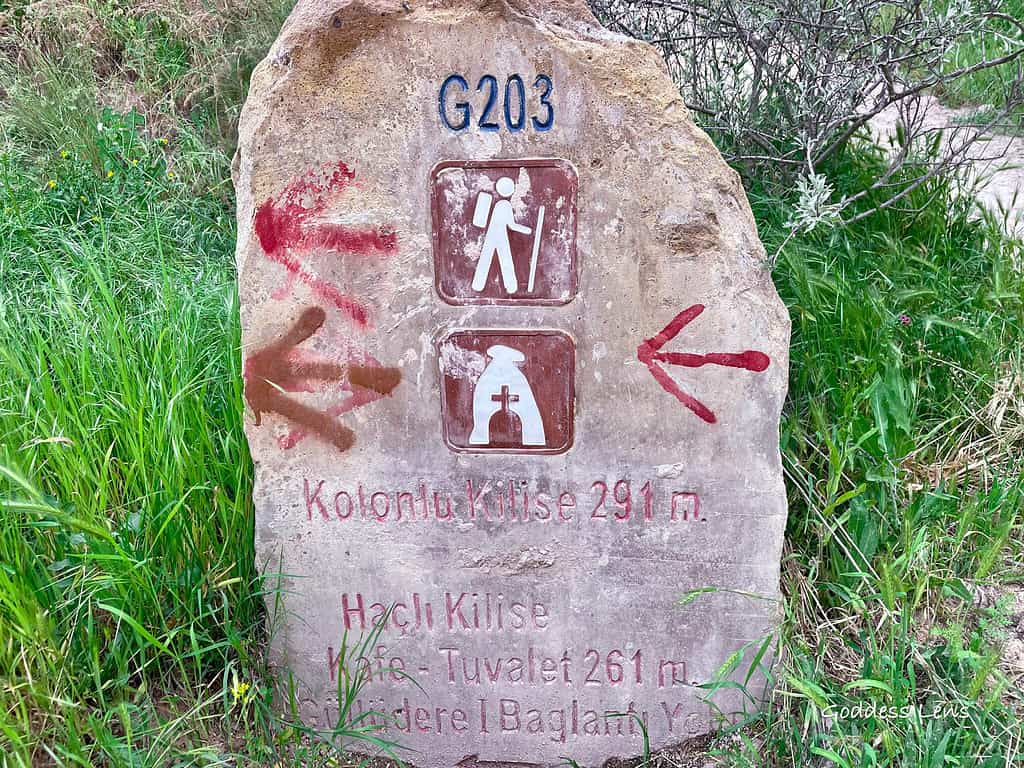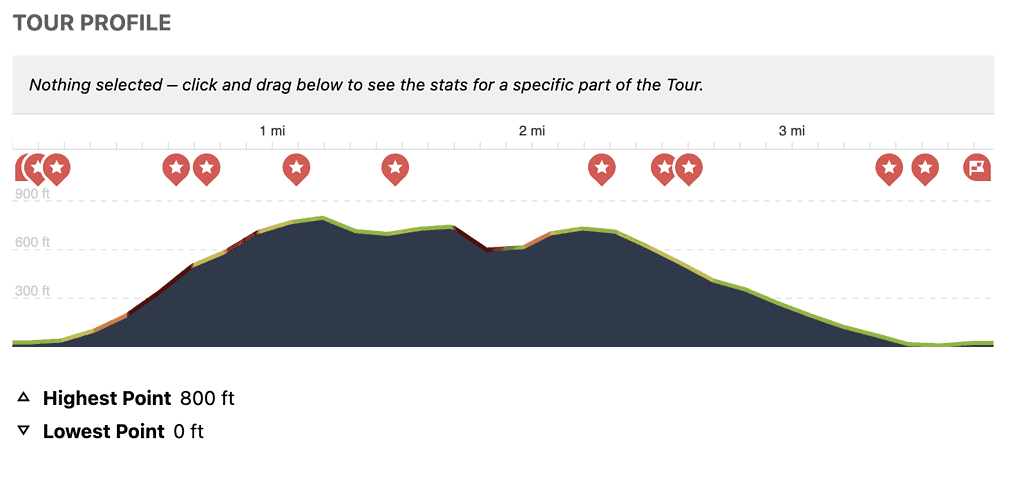
How to Estimate the Time You Need for Any distance! Or terrain.
Today, we’ll be answering a common question among hikers: How many miles can you walk in a day?
As a physical therapist and someone who has hiked their fair share of amazing long distance trails like the Alta Via 1 in the Dolomites, I know the struggle of trying to estimate how long a walk will take. Mountains, slippery trails and lots of stops for delicious food really make it hard to estimate.
🥾😓 Feeling Overwhelmed Planning a Hike? Use my custom-built online Hiking Time Calculator for Non-techie People.
What You Will Learn
- How Many Miles Can You Walk in a Day? There’s No One Answer
- Short on time? Quick Links
- Naismith’s Rule
- — 7 Factors that Influence Walking Speed
- 1. Your Fitness
- 2. The Terrain
- 3. Trail Conditions
- 4. Personal Factors EPP (Eat, Potty, Pictures)
- 5. Latitude
- 6. Gear
- Naismith’s Rule for Estimating How Long it Takes to Hike
- FAQ
How Many Miles Can You Walk in a Day? There’s No One Answer
But fear not, there are some handy rules of thumb to estimate your walks and I share them in the table below.
Let’s face it – there’s no one-size-fits-all answer to this question. How many miles you can walk in a day varies greatly depending on several factors, such as terrain, elevation gain, and your fitness level. That being said, there are some general estimates we can use as a starting point.
A fit hiker can walk between 20-30 miles a day, an average hiker 10-16 miles a day, and beginner hikers 6-8 miles per day.
| 🥾 Distance | 🕥 Fit Hiker | 🕐 Average Hiker |
|---|---|---|
| How long does it take to hike 2 Miles | :40 | 1 hour |
| How long does it take to hike 3 Miles | 1 hour | 1.5 hours |
| How long does it take to hike 4 Miles | 1:15 min | 2 hours |
| How long does it take to hike 7 Miles | 1:45 min | 3.5 hours |
| How long does it take to hike 15 Miles | 4-5 hours | 7-8 Hours |
Stay tuned until the end for my minimalist guide for hiking.
Short on time? Quick Links
Related hiking training articles:
Naismith’s Rule
Now, when it comes to estimating how long a hike will take, a general rule of thumb is to calculate 1 hour for every 3 miles of distance and add 1 hour for every 2,000 feet of elevation gain.
But this isn’t always accurate, especially if the terrain is steep or the trail is technical.
So, if you’re a beginner hiker, don’t be surprised if it takes you longer to complete a trail than the estimated time.

— 7 Factors that Influence Walking Speed
1. Your Fitness
Beginner, Average and Fit Hiker Paces
Here’s a table with the columns arranged in the order of Beginner, Average, and Fit Hiker on a 7 mile hike.
So an average hiker can cover 2-3 miles in an hour. If you’re climbing, add another 15-30 minutes for every 500 feet of elevation gain.
| Factor | Beginner Hiker (mph) | Beginner Hiker Time Estimate (Hours) | Average Hiker (mph) | Average Hiker Time Estimate (Hours) | Fit Hiker (mph) | Fit Hiker Time Estimate (Hours) |
|---|---|---|---|---|---|---|
| Base Time | 2 mph | 3.5 hours | 3 mph | 2.3 hours | 4 mph | 1.75 hours |
| Elevation Gain | +1 hour per 2,000 ft | +1 hour | +1 hour per 2,000 ft | +1 hour | +1 hour per 2,000 ft | +1 hour |
| Trail Conditions | +1 hour per mile | +1 hour | +1 hour per mile | +1 hour | +1 hour per mile | +1 hour |
| Personal Factors | +/- additional time | +/- additional time | +/- additional time | +/- additional time | +/- additional time | +/- additional time |
2. The Terrain
Elevation Gain
“Elevation Gain” refers to walking uphill or downhill. Unsurprisingly, going downhill is actually slower than walking on flat terrain. And we all know walking uphill takes time.
😓 Tip: If your knees are like mine and require some TLC a set of hiking poles can really help. Read my review of the best trekking poles based on my experience as a hiker and physical therapist.
When determining how many miles can you walk in a day, hiking apps like Komoot or AllTrails will have a rough outline of the ups/downs on a hike like this graph below. This trail I did in Montenegro started at sea level 0 and then goes up 800 ft and then back down 800 ft. All in 3 miles!
This is the nature of hiking in Montenegro!

3. Trail Conditions
“Trail conditions” may drastically change your speed even without huge hills. Uneven surfaces really slow you down as do wet and slippery trails. I honestly have found most “trail guides” to be irregular and varied in their determination of what is advanced or not.
Hiking trail difficulty roughly follows the same identification as ski resorts with black (severe), red (moderate), and blue/green as easy. Again, this I have found not to be accurate many times.
⭐️ A hydration vest can be very handy for longer hikes and doubles as a strength training device on shorter hikes. Read my full review.
Remember to follow hiking safety tips and tricks to enjoy the Outdoors.
4. Personal Factors EPP (Eat, Potty, Pictures)
“Personal factors” always come into play because Nature calls and everyone has an iphone to take photos. Plan some extra time and keep your eye on your watch to estimate how much time you’ll need for personal factors. How long does it take to hike 7 miles will be dependent upon how often you stop.
But let’s not forget about the unexpected things that can slow you down on a hike. Like taking a break to snap some scenic photos, spotting wildlife, or just enjoying the view. And hey, there’s no shame in taking your time to appreciate the beauty of nature.
Remember, hiking is not a race, and it’s important to pace yourself to avoid injury or exhaustion.
It’s better to take your time and enjoy the journey rather than pushing yourself too hard and risking injury. Have some fun, give yourself a trail name or give a trail name to a friend.
5. Latitude
A serious factor many hikers forget is to consider DAYLIGHT HOURS. If you’re planning on walking or hiking a serious distance, ensure you plan for adequate light.
- FYI: running out of sun is a great reason to carry a headlamp and portable battery charger in your backpack.
💦 Need to bring water on the trail? Consider bringing a reusable water bottle, water filtration system, water bladder for your backpack or purification tablets.
6. Gear
Without adequate gear, especially footwear, you’ll be limited in how many miles you can walk in a day. You’ll also need to factor in your packweight. If you have to carry 30 pounds on your back, it’s likely to be slower going. There are some rules for hiking and bringing the right gear is on the top of the list.
Salomon Adv Skin 12 W Set Hydration Vest - Women's
Benefits of using hydration packs vs standard weighted vests for hiking training include:
- More adjustable straps
- Multiple sizes to ensure snug fit
- Women-centric sizing
- Designed not to bounce
- Less pressure on shoulder blades and collar bones
- Many colors to choose
Comes with 12 liters of capacity. 2 water bottles on front to even out the weight. Multiple pockets, straps and hooks. The water bladder reservoir holds 1.5 liters.
You can attach trekking poles to the bottom of the pack.
Between water weight and additional weight you add into the rear pocket - it's possible to train comfortably with 20-25 lbs with this multi-functional weighted water vest.
Naismith’s Rule for Estimating How Long it Takes to Hike
Naismith’s Rule is a Start with Base Estimate of 3 Miles Per Hour on “Average”
- We are assuming 3 mph for an average hiker
- If you are a beginner give yourself a 2 mph speed
- If you are a fit hiker assume 4 mph
Elevation Gain, Trail Conditions, Personal Factors
- Assume an extra 1 hour per 2,000 feet of elevation gain. On average you go slightly faster downhill than uphill so consider your route.
- Consider your trail conditions. Is the path flat, rocky, cleared of plants and overgrowth? If not, give yourself an extra hour for the trail
- Personal Factors will play into your overall hiking time. Most people like to eat and go to the bathroom over the course of 15 miles, so keep watch of your time.
Recommended Resources Including a Hiking Time Calculator
- My online hiking time calculator can help you estimate your time hiking.
- If you are embarking on a multi-day hiking adventure, check out my minimalist guide to packing for hut to hut hiking trips. You definitely want to take less, rather than more.
- My favorite headlamp and portable battery charger in case I can’t make it back before sunset.
- I love hiking in a dress for comfort and style.
FAQ
How long does it take to walk 20 miles?
If you have a base level of fitness, it should be no problem to hike 20 miles in 9-11 hours.
How many miles can you hike a day on the Appalachian Trail?
This really depends on your personal tolerance level and you should plan some zero days. Some people like to burn 35 miles in one day, but most people find somewhere between 15-25 miles a day to be more comfortable.

Author profile: Morgan Fielder is a Doctor of Physical Therapy and passionate hiker who believes in exploring the world on foot with good food. Follow her journey as she shares science-based hiking tips and advocates for sustainable tourism.

